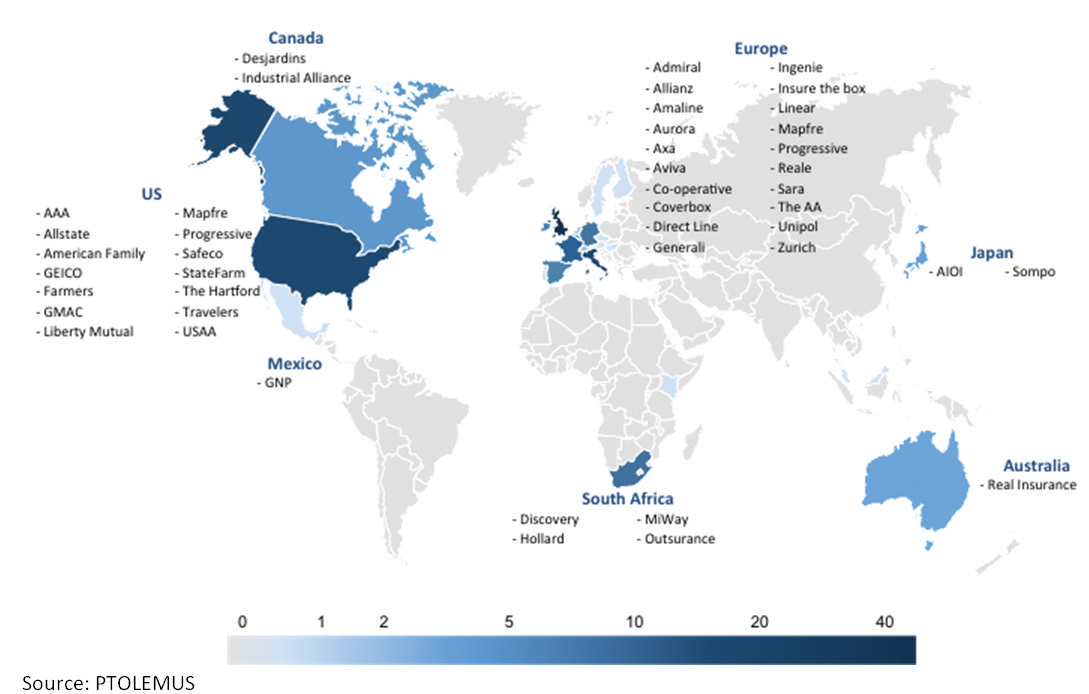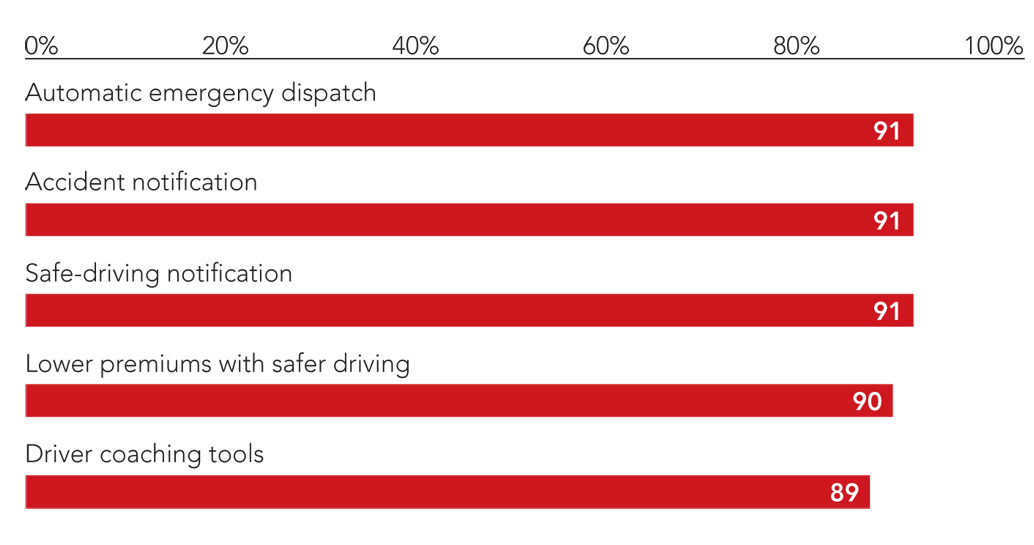Car insurance made cheaper by telematics has returned to news headlines in the UK this year. Will it really take off this time and can vehicle tracking provide an effective tool for enforcing or encouraging insurance compliance? Jon Masters reports Will 2012 go down as the year that telematics-based car insurance took off? In the UK at least, a groundswell of new policies, with premiums priced on the basis of tracked and analysed driving style, suggests a turning point has been reached. Some would argue t

Picture: Malcom Edwards
Car insurance made cheaper by telematics has returned to news headlines in the UK this year. Will it really take off this time and can vehicle tracking provide an effective tool for enforcing or encouraging insurance compliance? Jon Masters reports
Will 2012 go down as the year that telematics-based car insurance took off? In the UK at least, a groundswell of new policies, with premiums priced on the basis of tracked and analysed driving style, suggests a turning point has been reached. Some would argue that it has already happened and that companies new to ‘usage based insurance’ (UBI) are playing catch up. Others are understandably sceptical.The UK insurer Aviva has been here before. Back in 2008,
Telematics specialists are claiming significant advances in vehicle tracking and the sophistication of analytics used to assess driver behaviour. Greater accuracy and confidence of driver modelling and risk profiling means the costs of telematics policies are coming down – with greater appeal to insurers and customers – as the price of conventional insurance continues upwards, particularly for younger drivers. According to the
So far this year the AA has announced its new Drivesafe telematics insurance product and
Government backing
This year is looking to be an important one for promoters of telematics policies. CEOs of six leading insurers – including Axa’s Paul Evans – met with British Prime Minister David Cameron in February at his ‘insurance summit’, during which it is reported Cameron assigned an individual Minister to address every concern raised.Government and industry are not just hoping to lower the costs and prices of car insurance. Fraud and people driving without insurance cover are important issues being addressed by a number of organisations including ITS UK. Numbers of young drivers in the 17-24 age category reported as driving without insurance have risen dramatically in the past few years in parallel with rising prices. Earlier this year, Transport Minister Mike Penning backed telematics as an important part of the picture for solving the problem, for making insurance more accessible to young drivers.
Safety and the erroneous impacts of accidents involving uninsured drivers are among the main concerns. This applies to all, but statistically it is those of the 17-24 male age group that are most likely to be involved in an accident and most likely to be uninsured. For ITS UK, the problem is being considered by the organisation’s Enforcement Interest Group.
“The issue is being looked at and discussed in terms of encouraging compliance rather than enforcing it,” says ITS UK’s head of professional services Neal Skelton. “Traditional enforcement methods have been prosecution, with penalty points, financial penalty, vehicle confiscation and crushing, plus raised insurance premium. A growing number of people still run the risk because with policies becoming prohibitively expensive, for some, the penalties are not much greater and their perception is that until they get caught they save money.
“Of course this is a difficult demographic to deal with. There will always be a small proportion that continue to flout the law, but a large number can be influenced. Scientific research has shown that young males in particular are predisposed to take on risk rather than responsibility. Ultimately we want to stop people committing offences. The only way to do that for some groups is to encourage compliance using various methods.”
Technological means might include uninsured vehicles alerting authorities via chipped license plates, ANPR cameras or Bluetooth. It is not beyond the limits of possibility for legislation to be passed forcing young drivers or offenders to take out UBI forms of car insurance with their cars equipped to alert authorities as soon as a vehicle’s insurance expires. None of these options are being considered by government at present, however. A representative of Aviva that spoke to ITS International says UBI remains peripheral and largely unpopular. “In general people do not want their driving tracked and analysed,” he says.
Altered attitudes
Figures from elsewhere contradict that view. The price comparison website“Given the rising costs of motoring, we think the new generation of telematics policies will play a greater role in the car insurance market in the coming months. As our survey shows, many drivers across all age groups would happily embrace the new technology to keep their premiums down,” gocompare’s head of motoring and car insurance Scott Kelly says.
A leading supplier of telematics technology and data analysis to insurance brokers in the UK is Wunelli. The company’s joint founder and IT and innovations director Paul Stacy says: “We are expecting another three to four major insurers to launch telematics insurance this year and within 12 months all of the top motor insurers will have UBI products on offer.” This is being driven largely by rising costs. According to the AA it is the very high cost implications rather than frequency of accidents among the young driver category that is contributing most to the price rises. Plus, later this year, a European ruling comes into force, eradicating pricing of car insurance on the basis of gender. “The result of this is going to be a further increase of premiums for men and women due to uncertainties raising the price of reinsurance for brokers,” says Stacy.
“Increases in prices have already made insurance unaffordable for many young male drivers. From that point either they are going to drive on someone else’s policy or they are going to drive uninsured. Prices have also driven increases in under-insurance and proposal fraud through supply of false information. Not all young male drivers are the same but they are all being tarred with the same brush. Telematics can provide much better information to allow premiums to be reduced. We are seeing discounts of 30-40% being offered over conventional insurance products.”
Accurate scoring
The sophistication of telematics data collection and analysis is bringing down the costs of car insurance UBI, helping to make it more mainstream. Analytics specialist MyDrive has claimed significant advances from the advent of one second interval tracking – advanced on historical collection of data every 30 seconds. Highly detailed aggregated profiles of driving style and behaviour can now be built using powerful algorithms.“We take a range of measurements to assess five key comparators: pace (appropriate speed), anticipation, consistency, smoothness and calmness. Drivers are then given a score in comparison to advanced driver data from a definition by RoSPA (
But is such a system open to abuse? According to Holliday, some insurers are not interested in who is driving the car – they just want an aggregated risk profile for the vehicle. Insurance policies become more like annual accounts under UBI, adjusted mid-term on recent behaviour. Exception profiling is used to assess incidents; how driving is different from normal behaviour.
“Car insurance is already much open to abuse. Fraud is widespread and unfortunately there are always going to be those who are congenitally predisposed to avoiding insurance. Telematics allows insurers to get around some of this, but perhaps this will only be addressed adequately when the technology is ubiquitous and the police can ‘turn a car off’ if it does not have an insurance policy associated with it,” Holliday says.
“The use of insurance telematics makes the identification of high risk drivers very easy. As a result there will be a class of drivers who are identified as being largely uninsurable because of the quality of their driving. The key question is what happens then?”









